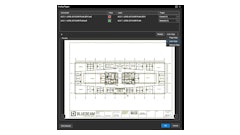Like BIM software years ago, virtual reality (VR) seems poised to take over and revolutionize development and construction processes and client engagement in the architecture/engineering/construction market.
“I think in two years you’re going to start to see clients push hard on being able to validate whatever they’re buying in VR,” says Boaz Ashkenazy, partner and CMO with Studio 216, a company that helps create virtual experiences of environments not yet built.
The broader VR sector is growing rapidly. According to Greenlight Insights, since 2010
- the number of new VR companies in the marketplace has risen from fewer than 40 to more than 160 in 2015
- funding for VR companies jumped from $36 million to $281.5 million
- Goldman Sachs Investment Research predicts the market for AR/VR head-mounted devices could reach $110 billion by 2020
Architecture and construction firms are already using VR headsets. St. Louis-based McCarthy Building Co., for example, walked doctors and nurses virtually through the plans for the Martin Luther King, Jr. Multi-Service Ambulatory Care Center in Los Angeles to understand where equipment needed to be placed and how spaces needed to be used before completing the facility. Additionally, general contractor Gilbane Building's multimedia studio and, its senior manager, Lucas Richmond, are using VR to help architects and developers they’ve partnered with to visualize their projects and make tweaks before breaking ground.
“A lot of times the goal is to shorten communication for faster, smarter, cheaper jobs,” Richmond says. “So we use it on the front end a lot to help the client make decisions faster, be it logistics on a site or materials on a floor.
“The biggest ‘aha’ moment was a couple of years ago,” Richmond adds. “We were doing our usual 4D simulation of how your building’s going to be built with logistics. But I went a step further because I wanted a proof case study, putting a developer into his condo space. Within a minute, he walked out on the balcony, and noticed that the balconies were too large. Low and behold, they changed the size of the balconies. Not only did they make the balconies smaller, they were able to push the living space out, which adjusts the cost on the living space. Within a minute in VR, they saved money and they made money.”

![[Video] University of Cambridge and Industry Partners Explore Mixed Reality for Infrastructure](https://img.forconstructionpros.com/files/base/acbm/fcp/image/2017/03/default.58ca978bc1835.png?auto=format%2Ccompress&fit=crop&h=75&q=70&w=75)


























